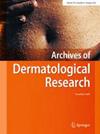Lipopolysaccharide-binding protein functions as factor VIII inhibitor in bullous pemphigoid associated with acquired hemophilia A
Abstract
Bullous pemphigoid (BP) represents an autoimmune blistering disorder that may coexist with acquired hemophilia A (AHA), a rare autoimmune condition arising from the formation of circulating autoantibodies directed against factor VIII (FVIII). The underlying pathomechanisms of BP-AHA remain elusive. This study conducted a retrospective analysis of data from 196 BP patients admitted to our hospital. We have collected serum samples from a recently admitted BP-AHA patient and healthy controls to isolate, screen and identify the potential FVIII inhibitors. The expression and function of lipopolysaccharide-binding protein (LBP) in BP-AHA were further validated by a series of biochemical experiments. The retrospective analysis showed that the activated partial thromboplastin time (APTT) values of seven patients exceeded 33.8 s (normal value) in 196 BP patients. FVIII: C (%) and FVIII inhibitors in the plasma of partial prolonged-APTT patients were significantly altered compared with control group or non-prolonged-APTT group. LBP was identified as a potential inhibitory protein of FVIII. Consistently, a notable alteration in LBP expression was observed in the plasma of BP patients with prolonged-APTT. Moreover, the amount of LBP bound to FVIII in the BP-AHA patient was notably higher than that in control group, which was also markedly reversed after treatment. In vitro experiments finally confirmed that exogenous LBP directly bound to FVIII and significantly inhibited FVIII activity. In conclusion, the incidence of AHA in BP patients may be substantially underestimated, which needs more vigilance towards indicators such as APTT, LBP, and FVIII. LBP emerges as an inhibitory protein of FVIII, indicating the potential involvement in the progression of BP-AHA.


 求助内容:
求助内容: 应助结果提醒方式:
应助结果提醒方式:


